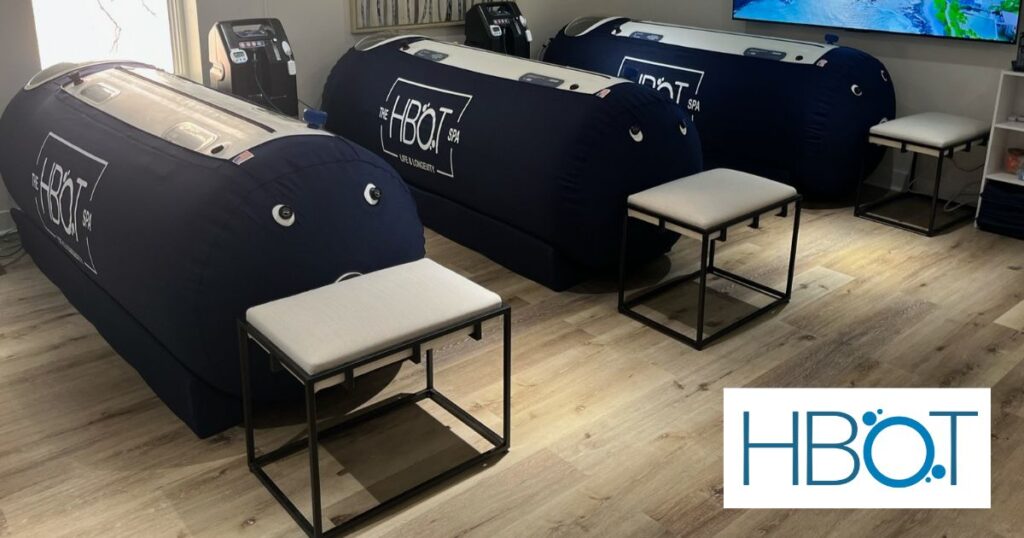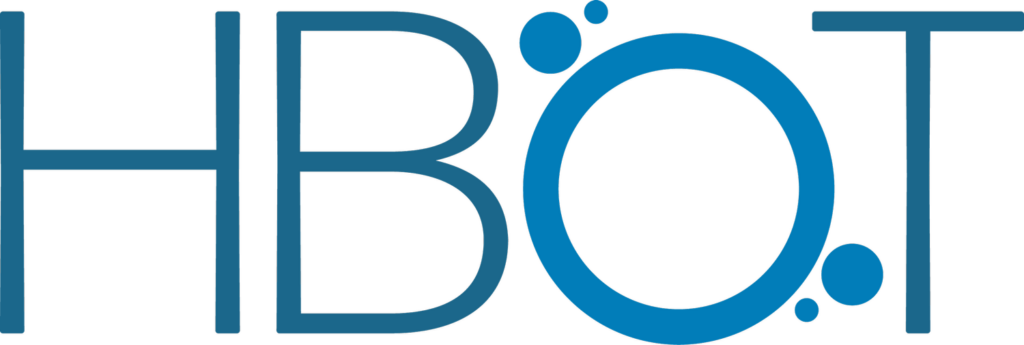Insights from The HBOT Spa
Athletes continuously push their bodies to the limit, striving for peak performance in their respective sports. However, the strenuous nature of training and competition can lead to both physical and mental fatigue. Recovery is crucial as it allows the body to repair itself, enhance performance, and prevent injuries. The HBOT Spa offers cutting-edge services like Hyperbaric Oxygen Therapy (HBOT) and IV Infusions, which are vital tools in an athlete’s recovery arsenal. This article explores the importance of recovery for athletes, the role of innovative therapies in facilitating recovery, and the benefits of Neurofeedback in managing concussions.

Understanding Athletic Recovery
Recovery for athletes isn’t just about taking a break; it’s a comprehensive process that involves several physiological systems. Effective recovery strategies can reduce muscle soreness, prevent chronic injuries, and maintain a high level of performance. Athletic recovery is a complex process that involves restoring physical and mental well-being after strenuous activities. It’s a crucial aspect of any training regimen, intended to allow the body and mind to repair and strengthen. For athletes, this is not just about achieving short-term performance goals but also about ensuring longevity in their sports careers. The HBOT Spa provides services that enhance this recovery process, leveraging state-of-the-art technologies such as hyperbaric oxygen therapy (HBOT) and IV infusions.
Contact Us About the Hyperbaric Oxygen Chamber for home use

Optimizing Performance Through Proper Recovery
Proper recovery is not just a means to prevent injury and fatigue; it is a strategic component of enhancing athletic performance. When athletes incorporate comprehensive recovery practices, they can see significant improvements in their performance levels. Here are key ways in which proper recovery helps optimize athletic performance:
Enhanced Physical Adaptation
Recovery is the period during which the body adapts to the stress of exercise, rebuilding itself stronger than before. This process, known as super-compensation, occurs when muscles repair and grow, and energy stores are replenished. By optimizing recovery periods, athletes can ensure they benefit from the fullest extent of these adaptations, leading to improved strength, endurance, and performance.
Increased Training Capacity
When recovery protocols are effectively managed, athletes can handle higher volumes and intensities of training without overtraining. Proper recovery prevents the accumulation of fatigue, which allows athletes to maintain a high quality of training consistently. This increased capacity not only improves skill and conditioning but also accelerates progress towards performance goals.
Reduced Risk of Injury
Inadequate recovery can lead to overuse injuries due to the repetitive stress of training without sufficient time for healing. By prioritizing recovery, athletes minimize the risks associated with excessive wear and tear on the body. This not only helps in maintaining a consistent training schedule but also ensures that athletes can perform at their best during key competitions.
Improved Mental and Emotional Health
Recovery also involves mental and emotional rejuvenation, which is crucial for optimal performance. Techniques such as meditation, adequate sleep, and psychological downtime can significantly reduce stress and improve concentration and motivation. When athletes are mentally refreshed, they are more focused during training and competition, which enhances performance outcomes.
Optimization of Physiological Processes
Recovery aids in the optimization of physiological processes such as muscle glycogen replenishment, the repair of connective tissue, and the reduction of inflammation. These processes are critical for sustaining high-level performance. For example, proper hydration and nutrition during recovery help maintain electrolyte balance and energy levels, which are crucial for both endurance and power-based sports.
Enhanced Decision-Making Abilities
Fatigue can impair cognitive function, leading to poorer decision-making and slower reaction times. Through adequate recovery, athletes ensure that their brains, as well as their bodies, are well-rested. This leads to sharper mental clarity and improved decision-making during training sessions and competitions, which can be the difference between winning and losing.
Leveraging Recovery Technologies
Incorporating advanced recovery technologies such as those offered at The HBOT Spa can further enhance these benefits. Hyperbaric Oxygen Therapy, for instance, can accelerate the recovery process by increasing oxygen delivery to tired muscles, while IV Infusions can quickly restore nutrients and hydration levels, immediately improving physiological readiness.
The Role of Injuries in Sports
Injuries are an unavoidable aspect of sports. From minor muscle strains to significant ligament tears, the impact of injuries can be minimized through proper recovery techniques. Implementing proactive recovery strategies like those offered at The HBOT Spa can help athletes not only recover faster but also fortify their bodies against future injuries.
Hyperbaric Oxygen Therapy (HBOT)
HBOT is particularly beneficial for athletes because it enhances the body’s natural healing processes through the inhalation of pure oxygen in a pressurized chamber. This elevated oxygen level causes a significant increase in the amount of oxygen delivered to the blood, fostering faster recovery of muscle function and reducing inflammation after intense exercise. HBOT can reduce recovery time from muscle strain and improve the healing rate of sports-related injuries by enhancing blood flow to the injured areas, reducing inflammation, and stimulating the body’s own healing processes. Athletes may find that HBOT can help them feel rejuvenated, reduce fatigue, and prepare their bodies quicker for the next performance.
IV Infusions for Enhanced Recovery
IV infusions are tailored to meet the nutritional demands of athletes, helping to restore the vitamins, minerals, amino acids, and electrolytes lost during intense physical activity. These infusions hydrate the body more effectively than drinking water alone, as they bypass the digestive system and allow for immediate absorption. For athletes, this means not only faster recovery times, improved hydration, and replenished nutrient levels that are often depleted during intense physical activities. The benefits of IV Infusions enhance performance capabilities during subsequent exercises or competitions. These infusions can be tailored to meet the specific needs of the athlete, depending on their training regimen and recovery status.
How Do You Optimize Athletic Recovery?
Optimizing athletic recovery is essential for any athlete aiming to maintain and enhance performance. Recovery strategies need to be well-rounded, encompassing physical, nutritional, and psychological elements. Here are key approaches and techniques to effectively optimize the recovery process:
Structured Rest and Sleep
Rest and sleep are foundational to effective recovery. Athletes should aim for 7-9 hours of quality sleep per night, as sleep is when critical repair and recovery processes occur, including muscle growth and hormonal balance. Establishing a consistent sleep schedule and creating a sleep-conducive environment (dark, cool, and quiet) are vital.
Active Recovery
Active recovery involves low-intensity exercise performed after more intense exercise sessions. This type of recovery aids in minimizing physiological and psychological stress. Activities like light jogging, swimming, or cycling increase blood flow, helping to clear out waste products accumulated during intense workouts. This also helps maintain flexibility and reduce muscle stiffness.
Nutrition and Hydration
Proper nutrition and hydration play a critical role in recovery. Consuming a balanced diet rich in carbohydrates, proteins, and fats helps replenish energy stores and repair tissues. Athletes should focus on post-exercise nutrition, ideally within a 30-minute window after a workout, to maximize recovery. This includes protein for muscle repair and carbohydrates to replenish glycogen stores. Hydration is equally important, with athletes encouraged to monitor their hydration status and drink fluids throughout the day, not just during exercise.
Recovery Technologies
Incorporating recovery technologies can significantly enhance the recovery process. Services like those offered at The HBOT Spa, such as hyperbaric oxygen therapy and IV infusions, provide targeted recovery benefits. HBOT increases oxygen levels in blood plasma, speeding up recovery and healing processes, while IV infusions can quickly restore electrolyte balance and hydrate the body.
Massage and Foam Rolling
Massage and foam rolling are physical methods to enhance recovery by improving circulation and flexibility, reducing muscle tension, and decreasing soreness. Regular massage therapy can prevent injuries by identifying and treating areas of tension before they develop into more serious issues. Foam rolling, or self-myofascial release, allows athletes to manage muscle tightness and trigger points daily.
Psychological Recovery
Mental and emotional recovery is as important as physical recovery. Techniques such as meditation, yoga, and visualization can help reduce stress and improve psychological resilience. Engaging in these practices can aid in mental recovery, especially after competitions or intense training periods, helping athletes maintain focus and motivation.
Regular Monitoring
Finally, regular monitoring of recovery status can help optimize recovery strategies. This can include tracking sleep quality, muscle soreness, mood states, and performance metrics. Adjustments to training loads and recovery strategies should be made based on these indicators to prevent overtraining and ensure athletes are recovering adequately.
How Neurofeedback Assists in Concussion Management
Neurofeedback is a type of biofeedback that uses real-time displays of brain activity—most commonly electroencephalography (EEG)—to teach self-regulation of brain function. At The HBOT Spa, neurofeedback is used to help identify concussion-related issues in athletes. This tool can be invaluable in the rehabilitation process, assisting in the recovery of brain function after sports-related concussions. By monitoring the brain’s electrical activity, therapists can develop personalized programs that target specific areas of the brain affected by concussive impacts.
Recovery As A Prevention Strategy
Beyond immediate recovery, the services offered at The HBOT Spa help in preventing future injuries. Regular use of HBOT and IV therapy can fortify the body’s resilience, helping tissues to withstand the rigors of future workouts and competitions. This proactive approach to recovery not only helps in maintaining an optimal state of readiness but also reduces the overall risk of injury, which can be a significant setback for any athlete.
Importance of Recovery
Recovery is pivotal in any athlete’s training regimen, playing a critical role in both immediate performance and long-term development. The primary goal of recovery is to restore the body to its pre-exercise state or better. This involves several key components:
Reducing Fatigue
Physical fatigue results from prolonged exertion, which depletes muscle glycogen stores and accumulates metabolic waste products such as lactic acid. Effective recovery strategies, such as active rest, proper hydration, and nutrition, help clear these byproducts and replenish glycogen, which significantly reduces muscle soreness and stiffness.
Replenishing Energy Stores
Immediately after exercise, the body is in a state where it can optimally replenish its fuel sources, primarily glycogen. Consuming carbohydrates soon after workouts can maximize this replenishment. This is crucial for athletes who perform frequent and intense workouts, as fully stocked glycogen stores are necessary to maintain high levels of performance.
Preventing Overtraining
Without sufficient recovery, the stress from repeated workouts can accumulate, leading to overtraining syndrome. This condition is characterized by a plateau followed by a decrease in performance, fatigue, mood disturbances, and increased risk of injury. By prioritizing recovery, athletes can prevent the physiological and psychological decline associated with overtraining.
Enhancing Injury Recovery and Prevention
Proper recovery helps not only in healing post-exercise micro-damage but also in preventing serious injuries. Techniques such as cold therapy, compression garments, and adequate sleep can reduce inflammation and improve circulation, thus aiding the body’s repair process. Regular, proactive recovery is essential in maintaining tissue health and overall physical integrity.
Supporting Mental and Emotional Well-being
Recovery isn’t just about the physical aspects; mental and emotional recuperation is equally important. Psychological stress from training and competition can be intense. Activities such as meditation, light yoga, and even engaging in hobbies can help restore mental balance. This mental and emotional downtime helps maintain an athlete’s motivation and keeps their mental focus sharp for future challenges.
Sustaining Immune Function
Intense training can suppress the immune system, increasing susceptibility to infections. Adequate recovery, particularly ensuring enough sleep and proper nutrition, can help bolster the immune system, enabling the body to combat pathogens more effectively. This is crucial for athletes, especially during peak training seasons when the risk of illness is higher.

Recovery is a critical component of any athlete’s regimen, crucial for both immediate rehabilitation and long-term health and maximize performance. By implementing structured recovery protocols, athletes can ensure sustained performance improvements and reduce the risk of physical burnout and psychological fatigue. The HBOT Spa integrates advanced recovery technologies like hyperbaric oxygen therapy, IV infusions, and neurofeedback to provide athletes with comprehensive recovery solutions. These services help athletes to not only recover faster but also enhance their performance and reduce the risk of future injuries. By embracing these innovative therapies, athletes can ensure they are giving their bodies the best chance to succeed and thrive in their sporting careers.

